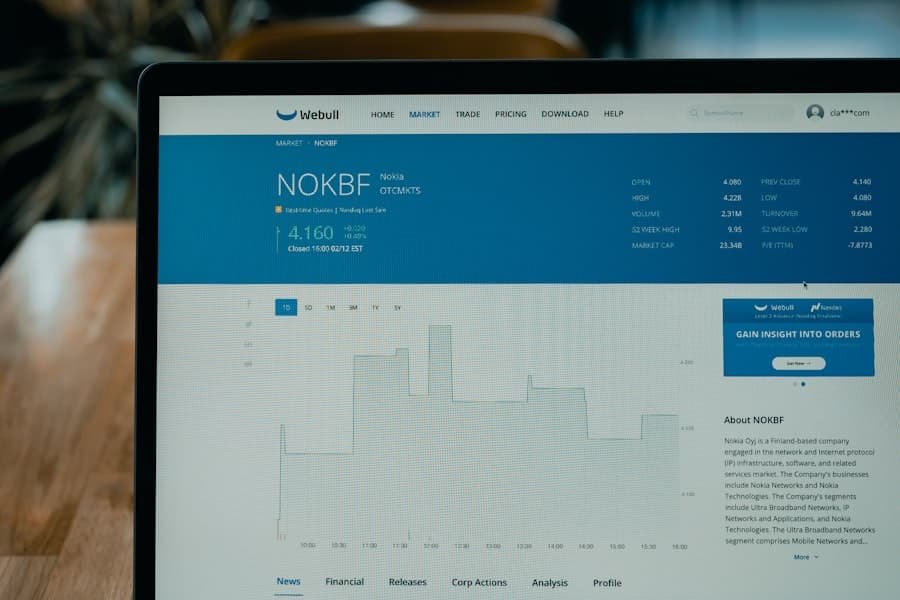Business cycles are a natural phenomenon in economies, characterized by alternating periods of growth and decline. These cycles are influenced by various factors, including fluctuations in consumer spending, investment patterns, government policies, and technological innovations. Understanding these cycles is essential for businesses and policymakers, as they significantly impact economic growth, employment rates, and overall societal well-being.
A typical business cycle comprises four distinct phases: expansion, peak, contraction, and trough. During the expansion phase, economic activity increases, businesses prosper, and unemployment rates decrease. This phase is followed by the peak, where the economy reaches its maximum output before beginning to decline.
The contraction phase is marked by a reduction in economic activity, leading to higher unemployment and decreased consumer spending. The trough represents the lowest point of the cycle, after which the economy begins to recover and enter a new expansion phase. It is crucial to recognize that business cycles are a normal aspect of economic systems and do not necessarily indicate systemic failure.
However, comprehending the causes and consequences of these cycles can assist businesses and policymakers in making informed decisions to minimize their negative impacts and promote long-term economic stability.
Key Takeaways
- Business cycles are the fluctuations in economic activity that occur over time, including periods of expansion and contraction.
- The Great Depression was a severe worldwide economic downturn that lasted from 1929 to the late 1930s, leading to high unemployment and widespread poverty.
- Government policies, such as the implementation of the New Deal in the United States, played a crucial role in mitigating the effects of the Great Depression.
- Technological advancements can both contribute to and mitigate business cycles, as they can lead to increased productivity and efficiency but also disrupt traditional industries and employment.
- The Great Depression taught important lessons about the need for proactive government intervention, financial regulation, and social safety nets to prevent and mitigate economic downturns.
The Great Depression: An Overview
The Causes of the Great Depression
During the 1920s, the United States experienced a period of rapid economic growth and speculation in the stock market. However, this growth was not sustainable, and when stock prices began to fall in 1929, panic set in, leading to a massive sell-off and a collapse in stock values. This had a ripple effect throughout the economy, leading to bank failures, reduced consumer spending, and widespread unemployment.
Global Impact of the Great Depression
The impact of the Great Depression was felt not only in the United States but also around the world. Many countries experienced similar economic contractions, leading to a global recession. The Great Depression had a profound impact on the lives of millions of people, leading to widespread poverty, homelessness, and social unrest.
Lasting Legacy of the Great Depression
It also prompted significant changes in government policies and regulations aimed at preventing similar economic crises in the future.
The Role of Government Policies in the Great Depression

During the Great Depression, government policies played a crucial role in both exacerbating and mitigating the economic downturn. In the early years of the depression, policymakers largely took a hands-off approach, believing that the economy would eventually self-correct. However, this approach proved ineffective as the economy continued to deteriorate.
One of the most significant government policies during the Great Depression was the implementation of protectionist trade measures, such as the Smoot-Hawley Tariff Act. These measures were intended to protect domestic industries from foreign competition but had the unintended consequence of reducing international trade and exacerbating the global economic downturn. As the severity of the depression became apparent, President Franklin D.
Roosevelt’s administration implemented a series of New Deal programs aimed at stimulating economic recovery. These programs included public works projects, financial reforms, and social welfare programs designed to provide relief to those most affected by the depression. While these policies were controversial at the time, they ultimately helped to stabilize the economy and lay the groundwork for future economic growth.
The role of government policies in the Great Depression serves as a valuable lesson for policymakers today. It highlights the importance of proactive and coordinated policy responses during times of economic crisis and the potential consequences of protectionist trade measures on global economic stability.
The Impact of Technological Advancements on Business Cycles
Technological advancements have played a significant role in shaping business cycles throughout history. From the industrial revolution to the digital age, technological innovations have transformed industries, disrupted traditional business models, and influenced consumer behavior. One of the most notable impacts of technological advancements on business cycles is their role in driving economic growth and productivity.
Innovations such as automation, artificial intelligence, and advanced manufacturing techniques have enabled businesses to produce goods and services more efficiently, leading to increased output and economic expansion. However, these advancements have also led to job displacement and shifts in labor markets, contributing to periods of economic contraction and unemployment. Additionally, technological advancements have influenced consumer behavior and market dynamics.
The rise of e-commerce, social media, and digital marketing has transformed how businesses reach and engage with consumers, leading to shifts in demand patterns and market volatility. These changes can have a significant impact on business cycles, as businesses adapt to changing consumer preferences and market conditions. Understanding the impact of technological advancements on business cycles is crucial for businesses looking to adapt to changing market dynamics and for policymakers seeking to promote long-term economic growth.
By embracing innovation and investing in workforce development, businesses can position themselves to thrive in an ever-changing technological landscape.
Lessons Learned from the Great Depression
The Great Depression serves as a valuable source of lessons for businesses and policymakers alike. One of the most significant lessons from this period is the importance of proactive government intervention during times of economic crisis. The New Deal programs implemented during the Great Depression helped to stabilize the economy and provide relief to those most affected by the downturn.
This highlights the potential impact of targeted government policies in promoting economic recovery and mitigating the impact of future downturns. Another important lesson from the Great Depression is the need for effective financial regulation and oversight. The collapse of banks and financial institutions during this period led to widespread economic turmoil, prompting significant reforms aimed at preventing similar crises in the future.
This underscores the importance of robust financial regulations and risk management practices in maintaining a stable and resilient financial system. The Great Depression also highlights the interconnected nature of global economies and the potential impact of protectionist trade measures on international trade and economic stability. As businesses continue to operate in an increasingly interconnected global marketplace, it’s crucial for policymakers to consider the potential consequences of trade policies on international trade dynamics and economic growth.
Comparing the Great Depression to Modern Economic Downturns

While the Great Depression was a unique period in history, there are several parallels that can be drawn between this period and modern economic downturns. One common factor is the role of financial market instability in triggering economic contractions. The stock market crash of 1929 was a significant catalyst for the Great Depression, while more recent downturns have been linked to financial crises such as the housing market collapse in 2008.
Additionally, government policies have played a crucial role in shaping both historical and modern economic downturns. The response of policymakers during times of crisis can have a significant impact on economic recovery and long-term stability. Lessons learned from past downturns can inform policy responses to current economic challenges, highlighting the importance of proactive and coordinated policy measures.
Technological advancements have also influenced both historical and modern business cycles. The rapid pace of technological innovation has led to shifts in consumer behavior, changes in industry dynamics, and disruptions to traditional business models. Understanding these dynamics is crucial for businesses looking to adapt to changing market conditions and for policymakers seeking to promote long-term economic growth.
Applying Historical Context to Business Cycles
In conclusion, understanding historical business cycles such as the Great Depression provides valuable insights into the factors that drive economic contractions and expansions. The role of government policies, technological advancements, and global market dynamics all play a crucial role in shaping business cycles throughout history. Lessons learned from past downturns can inform policy responses to current economic challenges and help businesses adapt to changing market conditions.
By applying historical context to business cycles, businesses and policymakers can make informed decisions to promote long-term economic stability and prosperity. As we continue to navigate an ever-changing global economy, it’s crucial to draw upon these lessons to mitigate the impact of future downturns and promote sustainable economic growth for years to come.
If you’re interested in learning more about the historical context of business cycles and the lessons we can learn from the Great Depression, be sure to check out the article “The Role of Fiscal Policy in Economic Recovery” on The Econosphere. This insightful piece delves into the impact of government spending and taxation on economic recovery, providing valuable insights into how fiscal policy can help mitigate the effects of business cycles.
FAQs
What is the Great Depression?
The Great Depression was a severe worldwide economic depression that took place mostly during the 1930s, beginning in the United States. It was the longest, deepest, and most widespread depression of the 20th century.
What were the causes of the Great Depression?
The Great Depression was caused by a combination of factors, including the stock market crash of 1929, overproduction, high levels of debt, and a lack of government regulation in the financial sector.
How did the Great Depression impact business cycles?
The Great Depression had a significant impact on business cycles, as it led to a prolonged period of economic downturn, high unemployment, and reduced consumer spending. It also highlighted the need for government intervention to stabilize the economy and prevent future crises.
What lessons can be learned from the Great Depression?
The Great Depression taught important lessons about the dangers of unchecked speculation, the need for government regulation of financial markets, and the importance of fiscal and monetary policy in managing business cycles. It also underscored the importance of international cooperation in addressing economic crises.








